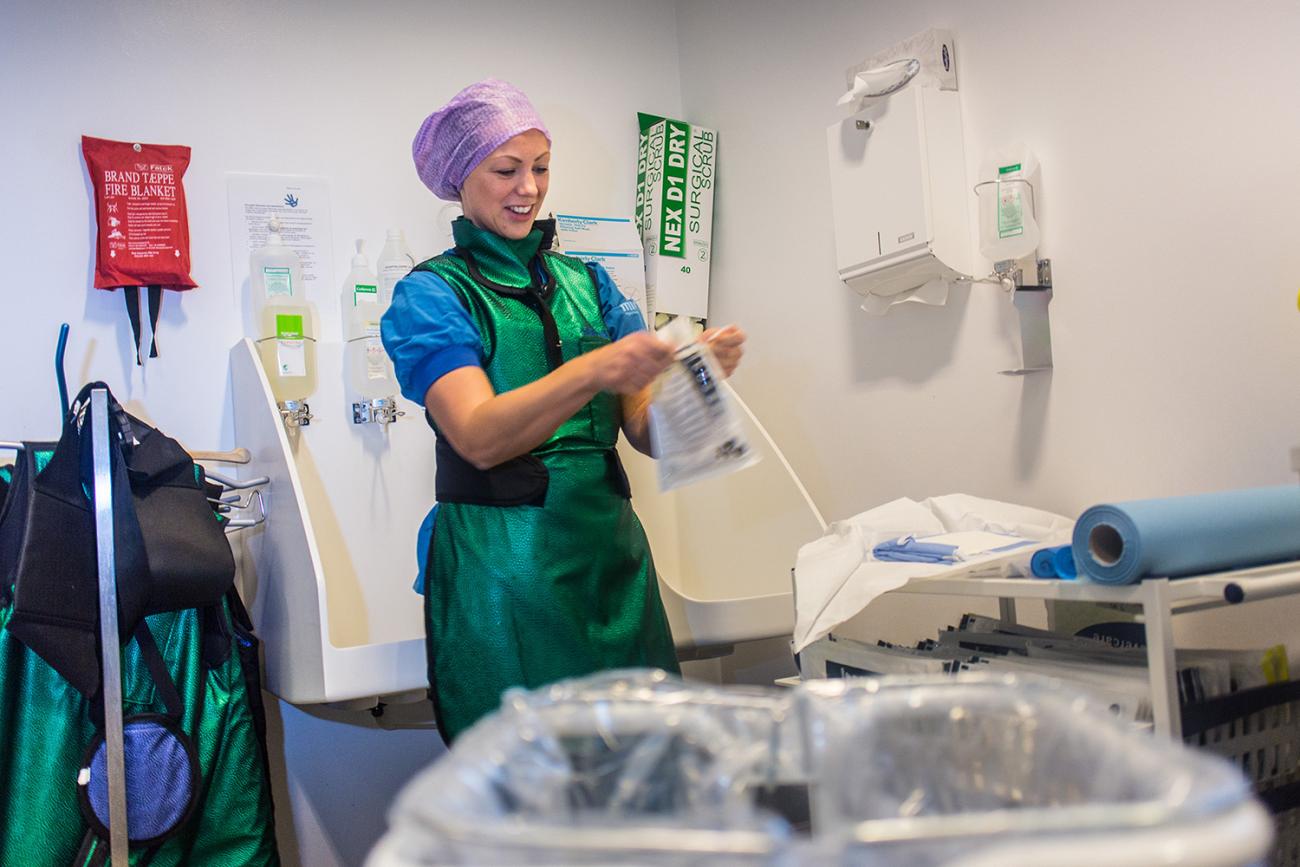Location: Aarhus, Denmark.
Work area: Products, Process.
Summary: Aarhus University Hospital offers an example of circular procurement applied to the healthcare sector and demonstrates that it is not necessarily more expensive to set recycling and environmental criteria in tenders.
This case study was first published in the report Strategic procurement in European healthcare, produced by Health Care Without Harm Europe.
Initial situation
Hospitals produce large amounts of plastic packaging waste: many products used on a daily basis in a hospital are wrapped in plastic to ensure sterility and therefore patient safety. Sample tests at AUH indicated that 18% of their solid waste is clean plastic packaging - approximately 400 tonnes annually, of which only 7 tonnes are currently recycled each year. Part of this problem can be attributed to a lack of universal manufacturing standards for plastic packaging; furthermore, many waste management facilities are reluctant to work with hospital plastic waste because of the complex and varied compositions of the plastic. There are also concerns that hospital waste may contain contaminated and/or infectious material; it is therefore difficult to immediately recycle plastic packaging from hospitals at a reasonable cost.
Proposed alternatives
The Aarhus University Hospital decided to collaborate with suppliers to overcome the reluctance and concerns surrounding healthcare plastic recycling. Bottles used for irrigation fluids were chosen as a baseline product since they are used frequently everyday within hospitals and are a relatively simple product.
AUH therefore launched the pilot project: Circular Solutions in Healthcare Plastics
The overall goal of the project is to increase recycling rates and to create more circular solutions within the value chain of medical plastic packaging waste.
Progress and benefits
Though the project runs until July 2020, preliminary results already demonstrate that introducing recyclability criteria in tenders does not lead to higher prices. AUH’s first test in a joint national tender showed that by setting recycling criteria, Central Denmark Region actually achieved a 24% cost saving compared to previous offers on the same product (bottles for irrigation fluid). As this was the first time responding to the recycling criteria, suppliers could not meet more than 50%, although the criteria did not form more than 5% of the total tender weighting, it did help determine the outcome because of the close price competition.
It is important to signal that there is demand for recyclable products and packaging through dialogue with manufacturers and recyclability criteria in tenders. Another key factor to make recycling feasible is to keep packaging material as simple and clean as possible, and avoiding mixing different polymers.
Implementation process
Currently, AUH and the Central Denmark Region are testing a set of generic criteria to support increased recyclability by applying these criteria to different tenders. In doing so, the relevance of the criteria and the market response is tested and further refined. The generic criteria are:
- Reduced packaging
- Include recycled material in secondary and tertiary packaging
- Develop take-back systems wherever relevant/possible
- Create products with mono-polymer packaging made of either Polypropylene (PP), Polyethylene (PE), or Polyethylene Terephthalate (PET) so they can be recycled
- Mark products for recycling
- The following material and characteristics are less preferred: Polyvinyl chloride (PVC), laminates, combinations of paper and plastics.
AUH wants to develop and test a value chain model for the creation of commercial and alternate values for hospital plastic packaging waste, by involving all the relevant stakeholders:
- Manufacturers: Develop guidelines for healthcare packaging to reduce packing and commit to specific targets for improved recyclability.
- Procurement: Develop uniform tender requirements for cooperation across markets.
- Hospitals: Increase sorting of specific high value fractions (e.g. PP, PE, PET).
- Waste haulers and compounders: Develop capacity to recycle clean plastic from hospitals in separate and certified streams.
Next steps
Whilst the irrigation bottles were chosen for their relative simplicity, it will take time to implement changes in any medical product: firstly, the European approval system process for medical products takes three years, and secondly, tenders typically run for 3-4 years.
Nevertheless, with the help of the Circular Solutions in Healthcare Plastics project, recyclability criteria continues to slowly gain exposure in the Global Medtech Industry; interest in sharing procurement criteria also continues to expand across North Western Europe.
Information about the organization
The Aarhus University Hospital (AUH) offers specialised medical treatments to the citizens of the Central Denmark Region and serves as the local hospital to the people of Aarhus city and the island of Samso. AUH has 1,150 beds and annually receives over 1 million patient visits.
